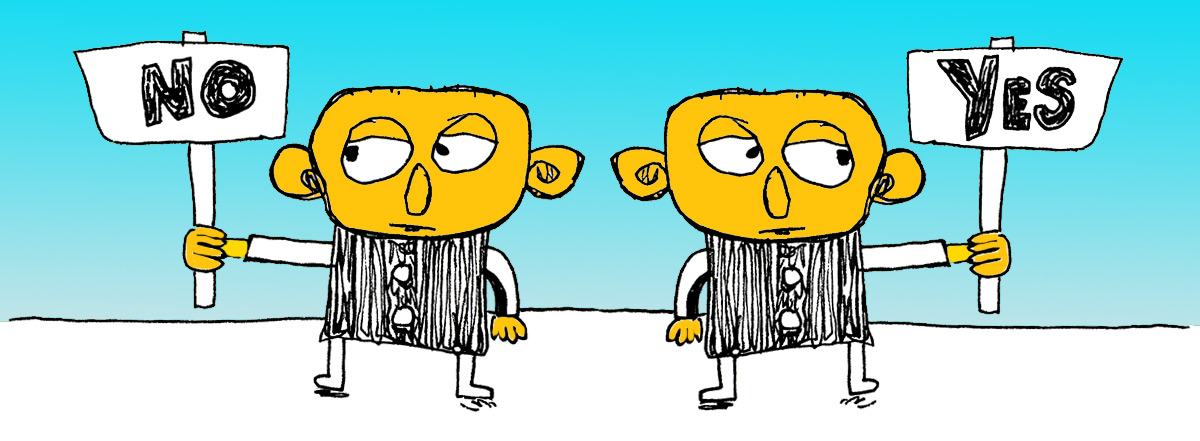How to survive as a freelance copywriter – lessons learnt the hard way.

The world has changed. And I’ve had to change with it. Some of it’s been fun; some of it’s been a right royal pain in the cobnuts.
The freelance badge of shame
I’ve been a freelance copywriter on and off for roughly 19 years. This latest stint (since March 2017) has been the steepest, but most rewarding, learning and unlearning curve.
When I last freelanced in 2002, things were different. There was no Twitter. LinkedIn was still in nappies. Creatives trudged the streets carrying actual three-dimensional portfolios. There were only a handful of freelance creative recruitment specialists. Freelancing was a last resort career option for most, a way of earning a few shekels between real jobs.
Now everyone’s a freelance copywriter, even nextdoor’s cat.
There are hundreds of freelance forums, creative job sites, writers’ collectives, content mills and the like.
Procopywriters, The Dots, Yunojuno… if you’re looking for a freelance copywriter, there are loads of places to find them and squillions of writers of every hue to choose from.
Freelancing has lost its badge of shame.
Clients are going direct to their roster of favourite freelance copywriters. Agencies are shrinking or growing as necessary, with a merry band of freelance talent bolstering their 5-day week creative staffers.
The rules of engagement are different now. I’ve had to master a few new tricks and adopt some novel approaches to the business of freelancing.
If 2017 was spent wobbling around on new legs and 2018 saw me finding my voice; 2019 onwards has been all about growth and creating stability.
So here’s what I’ve learned in the last few years.
1) Cashflow
You can be as busy as a workaholic beaver with midges in its knickers, but if the cash ain’t flowing, your business ain’t going. I now charge 50% upfront for most projects. It’s made a huge difference to the feast or famine thing.
2) The power of ‘no’
2017 Jonathan said ‘yes’ to anything and everything. Understandable when you’re getting off the blocks, but not so much once you’ve found your stride. There’ve been two notable occasions where saying ‘no’ has paid off.
The most obvious was when I was asked to take part in a three-way creative scrum. I’d come highly recommended by the clients’ designer, but they wanted sample email templates writing, by me and two other copywriters. I said that I don’t work that way and politely explained why. Within a week, we were working together and worked together for over a year.
I also said ‘no’ to a brief that didn’t sit well with my conscience. I’d done a similar project a couple of years back purely to pay the bills. Probably a sensible move considering how much paid work was booked in at the time. But I now have an unwritten rule when it comes to writing for anything, shall we say, on the unsavoury side:
If my inner voice is screaming ‘no’, I say ‘no’ – unless my starving family are screaming louder.

3) The power of ‘yes’
Saying ‘no’ is empowering, but so is saying ‘yes’. It can be tempting to run away from new challenges, but sometimes it pays off to charge headlong into the unknown. In the last few years, I dived well out of my depth several times. Along with conquering the fear (of failure/being found out/the unknown), these opportunities have proven to be where I’ve learned the most.
I’ve had to work doubly hard to get my head around new technical challenges. I’ve driven down blind alleys and got lost in bottomless pits of research. But I’ve survived, made new connections and learned a load of new stuff along the way.
4) Allow enough time
Things often take longer than you think they will. Rarely less.
If a client has an unrealistic deadline, tell them. If you’ve agreed one set of amends, allow for two. If they promise draft content by the 3rd of the month, build in time for it arriving on the 7th.
Don’t over-promise or commit to doing something you know you can’t deliver on time (or to a standard that you’re happy with). Allow room for the overnight test; you’re only ever one typo away from making a tet of yourself.
5) Do the maths
I saw a tweet recently: ‘freelance copywriter needed to write three articles at £50 each’.
If the bailiff’s knocking at your door, you might be tempted. I’m not judging, but stop and do the maths. Even if you could churn each article out in half a day, there are two big questions you need to ask yourself:
a) Do I want to spend my days churning or creating?
b) Am I worth more than £100 a day?
Only you can decide.
Of the 365 days available every year, as a freelancer you can realistically expect to be working something like 100 to 200 of them. Much more than that, there’s no time for family, self-promotion or personal hygiene.
If you’re brand new to freelancing, with little in the way of client contacts, you could be looking at yawning gaps between projects. If those cheap-as-chips jobs feel like they’ll lead to something bigger and better, go for it, but beware:
– Clients who pay as little as possible won’t want to pay more next time
– Doing work on the cheap will leave you gurning with resentment
– Self-respect is important; jumping into the content mill could crush it out of you
– Poor pay usually ends up with poor work and you need good work to attract good jobs.
6) Don’t hold your breath
You can spend half your life waiting, hoping and praying for that big contract to come off. You’ve put your proposal in and you’re already working out how to spend the fee. A week goes by; a month; three emails asking if they’ve made a decision go unanswered. Let it go.
It’s a numbers game. Plant lots of seeds and some are bound to sprout. Keep going, keep planting; it’s bound to come good.
Here’s an example. I wrote a couple of guest blog posts for The Logo Creative: Why Designers and Copywriters Should Collaborate More and The Designer’s Guide to Brand Tone of Voice. 18 months later, ping; an email comes in – ‘You’ve been recommended by Andrew at The Logo Creative…’ 18 months, that’s the gestation period of an elephant. Patience makes happy freelancers.
7) Put your back into it
Most creatives are lazy toe rags. Give ’em a sack of dosh, they’ll shove it up their noses, squander it on shiny things or buy a tropical island and spend the next 20 years swinging in a hammock.
So how come some creative freelancers are more successful than others? Talent aside, it’s because they kick themselves up the backside.
Survival in the creative business requires a bit of good old-fashioned work ethic. The competition’s tough, the next generation are nipping at your nethers, the landscape’s constantly shifting, clients move jobs…
Being a freelance copywriter, designer, photographer or whatever, isn’t easy. You are your own bookkeeper, publicist, new biz go-getter, account handler, stylist and workplace therapist. If you aren’t prepared to graft, this could be the wrong career path.
8) Write your own rules
Hopefully bits of this post will spark something positive for you. Chances are, some of it will sound like nonsense or simply won’t apply to your unique situation. No one knows everything about this game and to be honest, we’re all making it up as we go along. So take the nuggets that click with you (from here and wherever), then write your own rules to live, work and play by.
Then please share them, cos we can all learn from each other.
If this has been useful, you might want to dive into What I Learnt in 2017 – one of the toughest years of my career (so far).
Jonathan Wilcock (that’s me) is a Senior Freelance Copywriter.
You can drop me a line here, or email jonathan@sowhatif.co.uk